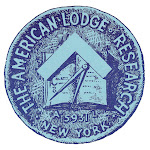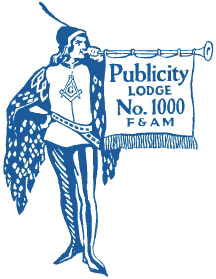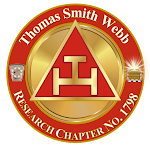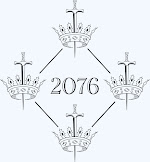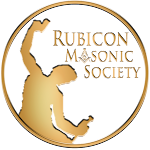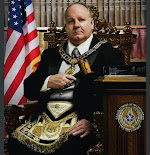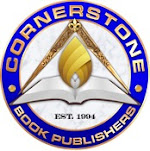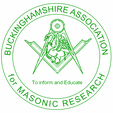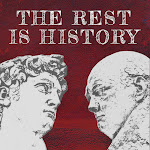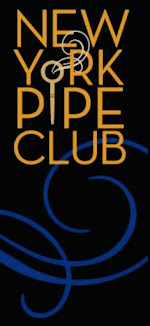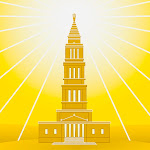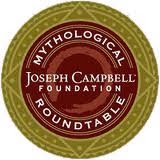What better way to commemorate the anniversary of Thomas Smith Webb’s birth in 1771 than to attend your research lodge for a dive into the history of Freemasonry’s ritual literature?
Actually, I guess initiating a candidate with Webb’s ritual might have been better. And passing him would have been good. And, sure, raising him could have been a great commemoration, but we don’t make Masons in The American Lodge of Research. We make ’em think.
The program Tuesday night in the French Doric Room at Masonic Hall was “Masonic Hall Monitors,” for which three experts united for discussion of the history and evolution of ritual ciphers, monitors, and exposures.
In truth, Webb’s birthday was the following day. Regardless, we think we arrived at the reason why exoteric ritual books are commonly called monitors: Because Webb titled his The Freemason’s Monitor; or, Illustrations of Masonry: In Two Parts, and the moniker “monitor” stuck.
 |
| etymology.com |
The origin of the word “monitor” shows it derives from the Latin for “one who reminds, admonishes, or checks,” also “an overseer, instructor, guide, teacher,” according to etymology.com, so the term is apt, and seems to have become the aptonym many grand lodges use to title their books of exoteric Masonic rituals (charges, funerary ceremony, cornerstone dedication, etc.). Others call them manuals. How boring.
Anyway, we welcomed RW Sam Kinsey, Chairman of Grand Lodge’s Custodians of the Work; RW Michael LaRocco, Executive Director of the Chancellor Robert R. Livingston Masonic Library upstairs on 14; and RW Ben Hoff, Past Master of New Jersey Lodge of Masonic Research and Education 1786 and Past Grand Historian in Jersey. In concert, they gave a thorough review of these books, from Masonry Dissected, printed in London in 1730, and which gives the first known look at a Third Degree, to the forthcoming New York Monitor, due before the Grand Lodge Communication next May, and therefore just in time to provide our lodges the bona fide Installation of Officers ritual.
 |
Wonderbook 1942 GLNY Monitor |
In the Grand Lodge of New York, the Custodians of the Work is the team that maintains the integrity of the ritual our lodges use. I’d say the gist of Sam’s presentation is: Ritual changes over time. Sometimes, things need clarification or correction. Other times, the sensibilities of the present day might necessitate an addition or a deletion.
 |
| Sam Kinsey |
Whatever the case, it is wrong to believe that Masonic rituals are the same from place to place, and that they have not been altered since 1717. Equally important is to view your ritual as more of a script to a performance than as holy writ that demands a rigid, unfeeling delivery. When appropriate, use inflection; watch your timing. Know the vocabulary. Remember you are educating someone.
 |
| Michael LaRocco |
Bro. Michael followed Sam’s talk, wheeling a booktruck laden with antique and other vintage New York ritual texts into the room for a show-and-tell exhibit—including an original, from 1797, copy of Webb’s Monitor. This and the other books came from the Livingston Library’s archives and stacks; collectively, they illustrated Sam’s talk on how rituals change over time, requiring new printings to impart the ritual to new generations of Masons. The most recent publication of the Standard Work and Lectures came in 2019, shortly after a panicked grand secretary had discovered that the inventory of ritual books had dwindled to a single copy. The latest monitor, however, dates way back to 1989. That book is not current today, and the long anticipated update is coming, as noted above.
Bro. Ben was last to speak on account of his research paper “Monitors and Ritual Ciphers” spanning twenty-six pages. His specialty is forensic examination of Masonic rituals, and he owns an impressive collection of eighteenth, nineteenth, and twentieth century ritual books—official and otherwise—on which he bases his theses.
He started us with a look into the Edinburgh Register House Manuscript from 1696, which shows us how short and simple Masonic ritual had been while also exemplifying how the structure has changed. What we today call a lecture is a long monolog delivered from memory by (hopefully) a gifted orator, but in a seventeenth and eighteenth century lodge, a lecture was a conversation. It was question-and-answer format, which actually lives on today. Think lodge Opening.
Between 1696 and today, embellishments were added to give literary depth to the symbolism. Most of these arose in the late 1700s from the books of three English authors. A Candid Disquisition, by Wellins Calcott (1769); The Spirit of Masonry, by William Hutchinson (1775); and, especially, William Preston’s Illustrations of Masonry, various editions of which began appearing in 1772. These authors get the credit for much of what we say today in lodge.
It really is remarkable how much of their prose basically remains intact. I’ve written about these books before, and I urge you to seek them out for your edification.
What we today know of ritual from between the 1720s and 1770s comes from ritual exposures that were printed without authorization (ergo exposures), but were bought anyway by Masons in need of handy ritual references. Masonry Dissected is a great source for seeing how fundamental lodge rituals were in 1730. The candidate is prepared, admitted, introduced, obligated, charged, and fed.
It also was not unheard of for brethren to handwrite their rituals for personal use.
Regarding monitors, Ben explains:
 |
| Ben Hoff |
The key thing to remember about all Masonic monitors is that they were not exhaustive ritual guides. The two key characteristics of a monitor that distinguish it from a ritual are the absence of any traditionally secret ritual material, and the inclusion of such other supplemental material as would be useful to running the lodge. This supplemental material included items such as procedures for installations, lodge consecrations, funeral services, cornerstone layings, recommended procedures for petitions, interrogatories, and similar matters. As for ritual material, only openly published illustrations included as expansions of the lectures, prayers, and similar non-controversial material are included.
Getting back to Webb, it was he who adapted Preston’s Illustrations for American use, making changes to ritual structure that comprise his Monitor. In his day, grand lodges in the United States didn’t have official standardized rituals, and they definitely were not publishing ritual books (remember what happened with William Morgan in 1826), so Webb made a career of traveling the states and imparting his version of the work to lodges.
Later still came the artistic renderings of our symbols by Jeremy Ladd Cross. His book, True Masonic Chart or Hieroglyphic Monitor, is whence the familiar sketches we know of Craft and Royal Arch symbols came.
In addition to all these, were other authors’ coded ritual books of varying complexity and weirdness.
It wouldn’t be until the twentieth century that grand lodges in America would publish their own authorized ritual texts. In New Jersey, Ben explained, this was because some other guy was profiting from selling such books, so the grand lodge decided in 1967 to make the money for itself.
The hour was late—some of the brethren had to excuse themselves to catch their trains—so I had to end the meeting. I think everyone present got their money’s worth, and I feel good about it all. (I’m a fairly anxious Worshipful Master.)
 |
| Macoy Masonic Supply Co. |
I had planned on giving a fourth talk on the subject of Macoy Masonic Supply’s reprinting of Robert Macoy’s 1867 Masonic Manual, but it seems the 750-book run has sold out, and I didn’t want to promote something the brethren cannot buy. It’s pretty cool, though.
Under business, we elected to Corresponding Membership a dual New York and California Mason who also has been a professor and lecturer at several universities, including Columbia. He has submitted a paper already!
The American Lodge of Research will meet again in early 2025. We will hit the road on February 19 for a joint meeting with Dunwoodie 863 in New Rochelle. We’ll be back in the French Doric Room on March 31 for a French-themed program involving both Lafayette and Tocqueville. I’m working on arranging Zoom sessions too, but more on that later.












